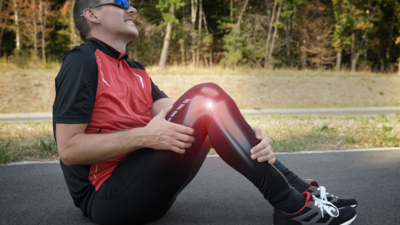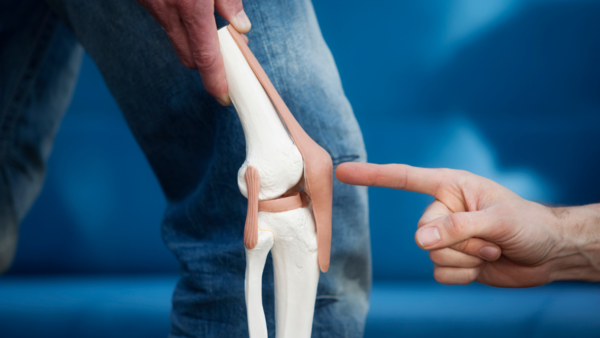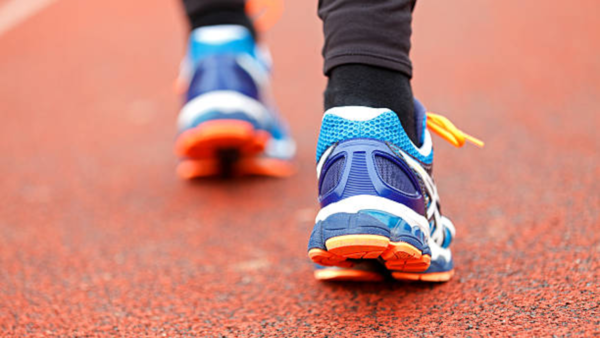
Brisk walking has recently gained attention to become a popular exercise for staying fit and healthy. It’s, of course, simple to do, and has sureshot effects on the body, and also is accessible to people of all ages. But does it pose any threat to our knees or can it be of concern for those with knee concerns, like arthritis or previous injuries? Can brisk walking hurt your knees? Does it worsen existing problems? Here is the answer to your questions like how this form of exercise impacts knee joints and how to walk right to protect them.
“Brisk walking has benefits, even for individuals with arthritis. It promotes joint lubrication, enhances the strength of the muscles around the knees, and can improve mobility. However, individuals with arthritis should be mindful of their pain levels and avoid walking on uneven surfaces, as these can increase the strain on the knees,” said Dr. Rakesh Rajput, HOD & Director – Orthopaedics, CK Birla Hospital.
Impact of brisk walking on knee joints
Brisk walking can help most people strengthen the muscles surrounding their knees and improve their overall joint health. However, if you already have knee concerns such as arthritis or cartilage degradation, you should follow some caution. Walking’s repetitive movement stresses the knees. Walking at a brisk speed can improve mobility, but it can also increase some discomfort under various circumstances. Walking promotes circulation to the joints, which can help with stiffness, but walking too much at that pace also inflames the tissues around the knee.
“The ability to brisk walk and its consequences depend on many factors like body weight, muscle strength, grade of knee arthritis. In obese patients with severe knee arthritis or unstable knee due to previous ligament injury, brisk walking may aggravate pain and cause problems. A general rule of thumb is that if the patient feels comfortable during and after brisk walking, then they should continue to do it. If pain starts early on during brisk walking, it is best avoided,” explained Dr Sahil Gaba, Consultant, Orthopaedic and joint replacement, Amrita Hospital Faridabad.

If you have pain while or after walking, your knees may be under too much strain. Excessive walking can cause cartilage wear and strain over time, especially if your posture is poor or you’re pushing yourself too hard.
Can brisk walking lead to knee injuries?
Brisk walking, when done correctly, generally doesn’t cause knee injuries in healthy individuals. In the long term walking with poor technique can cause problems. Improper form, walking on uneven surfaces, or wearing the wrong shoes may increase stress on the knees, which can lead to potential injuries like tendinitis, ligament strains, or meniscus tears.

For those with pre-existing conditions like arthritis, long-term walking can increase these symptoms if not done properly.
“The most common symptom is pain in the knee, which is generally aggravated after walking or prolonged standing. Another common symptom is instability of the knee, which generally manifests as giving way while walking or climbing stairs. The knee buckles and patients can even loose balance and fall. Then comes locking of the knee. Locking episodes lead to sudden jerky resistance to knee movement and are generally accompanied by pain. Patients feel like something is mechanically blocking their knee movement. More commonly, these episodes are short lived and movement of knee becomes normal after a few minutes, but sometimes locking can persist for hours or days and may even need surgical intervention,” said Dr Sahil.
Warning signs of knee injuries
Your body often gives warning signs before a knee injury gets worse. Pay attention to these key symptoms:
7 Positive habits to start your day
- Sharp or consistent
knee pain during or after walking. - Swelling around the knee joint.
- Stiffness or reduced range of motion.
- Popping sounds or sensations in the knee.
“Key signs of knee injuries include persistent pain, swelling, a feeling of instability or the knee “giving out,” and difficulty in bending or straightening the knee. A grinding sensation or the knee locking during movement can also indicate an injury,” said Dr Rakesh.
If you experience any of these symptoms, it’s important to stop and rest. Ignoring these signs can worsen the condition, making recovery longer and more difficult.
How to walk right: Proper technique to protect your knees
Walking with the right posture and technique can greatly reduce stress on your knees. Here are some tips:
- Keep your spine straight and avoid slouching, as it shifts weight improperly to the knees.
- Take shorter strides rather than pushing for long steps. This keeps the pressure on the feet and knees balanced.
- A strong core helps support your lower body and reduce stress on the joints.
- Proper walking shoes with good arch support can absorb impact and protect your knees.
“When waking, one should try and stand straight with head facing forwards, avoid head stooping down and try and keep your gaze straight ahead. Stand straight to keep the spine elongated, and not stooping or leaning forward. Balance can be improved by trying and contracting abdominal muscles while walking. Swinging the arms straight ahead during walking improves balance. Supportive and comfortable footwear is also important,” suggested Dr Sahil.
Avoid walking on hard or uneven surfaces for longer periods. These can increase the impact on your knees, leading to discomfort or injury.
